Evolutionary Ecology
The department of Evolutionary Ecology gathers complementary skills in behavioural ecology, population dynamics, population biology, community ecology, and methodology (statistics and modelling). The research done in the department aims at studying how animal species evolve in a changing world by understanding the causes of the evolution of traits, adaptations and interactions. For that, we consider different levels of organization from individuals to populations and communities. Because organisms cannot be considered isolated from other biotic factors, we consider pathogens but also competing species within communities.
We study how individuals adapt to their environments that are largely impacted by anthropic pressures, and how life history traits and behaviour evolve in response to these pressures. Although we mainly focus on phenotype, we more and more consider the mechanistic link between the genotype and the phenotype. We develop the theoretical framework of our discipline through a conceptual and modeling approach. In parallel, we test hypotheses that arise from theoretical predictions through experimental, comparative and observational approaches on different biological models (insects, birds, mammals). Experimental approaches are developed in the laboratory (insect model) and in natura (bird, insect and mammal models). Observational and comparative research is mainly concerned with vertebrates. Our approaches are also, and increasingly, interested in the mechanisms of adaptive responses. In addition to the classical approaches of demographic analysis and trait change, methods of ecophysiology, chemical ecology and molecular biology are used.
Our department hosts several long-term studies of wild populations of different species. These long-term studies offer a valuable way to understand how biotic and abiotic factors affect individuals’ life history traits, and the functioning of populations in natura. Five populations of mammalian species are thus monitored for several years (more than 40 years on roe deer, 30 on Alpine marmots, 25 years on cats, 16 years on zebras, and 20 years on impala). Two of our study sites (La Sassière in Vanoise National Park (Alpine marmots) and Hwange National Park) have been certified as “Site d’Etude en Ecologie Globale” (SEEG), and two (ZA “Hwange” and ZA “Antarctic and sub-Antarctic”) were certified as “Zone Atelier” by the CNRS.
The department of Evolutionary ecology is also largely involved in training activities. Lastly, we also have strong socio-economic relationships. Indeed, because we address questions of major societal interest (global warming, public health) we tightly collaborate with socio-economic partners (Office Français de la Biodiversité, Vanoise National Park, Hwange National Park in Zimbabwe, Office National des Forêts, etc.) and participate to general public and media events.
Publications
Display of 2251 to 2280 publications on 2449 in total
Optimal growth temperature of O157 and non-O157 Escherichia coli strains
Letters in Applied Microbiology . 33 : 352-356
Journal article
see the publicationIntra- and interspecific morphological variation in the field mouse species Apodemus argenteus and A. speciosus in the Japanese archipelago: the role of insular isolation and biogeographic gradients
Biologiacal Journal of the Linnean Society . 74 : 557-569
Journal article
see the publicationChlamydiose et fièvre Q chez les ongulés de montagne : questions sur le seuil de positivité
Médecine et Maladies Infectieuses (1971-2020) . : 311-312
Journal article
see the publicationLocomotor performance of Drosophila melanogaster: interactions among developmental and adult temperatures age and geography
Evolution - International Journal of Organic Evolution . 55 : 205-209
Journal article
see the publicationChill-coma temperature in Drosophila: effects of developmental temperature latitude and phylogeny
Physiological and Biochemical Zoology . 74 : 429-434
Journal article
see the publicationPhenotypic plasticity of body size in Drosophila: effects of a daily periodicity of growth temperature in two sibling species
Physiological Entomology . 26 : 351-361
Journal article
see the publicationThe stength of phenotypic selection in natural population
The American Naturalist . 157 : 245-261
Journal article
see the publicationChill coma tolerance: a major climatic adaptation among Drosophila species
Evolution - International Journal of Organic Evolution . 55 : 1063-1068
Journal article
see the publicationCharacterization of bacterial and fungal soil communities by automated ribosomal intergenic spacer analysis fingerprints: biological and methodological variability.
Applied and Environmental Microbiology . 67 ( 10 ) : 4479-87
Journal article
see the publicationA mathematical model describing the thermal virus inactivation
Vaccine . 19 : 3575-3582
Journal article
see the publicationPopulation density and small-scale variation in habitat quality affect phenotypic quality in roe deer
Oecologia . 128 ( 3 ) : 400-405
Journal article
see the publicationThe browsing index: new tool uses browsing pressure to monitor deer populations
Wildlife Society Bulletin . 29 ( 4 ) : 1243-1252
Journal article
see the publicationInfluence of oestrus synchronization on male reproductive success in the domestic cat (Felix catus L.)
Proceedings of the Royal Society B: Biological Sciences . 268 : 1049-1053
Journal article
see the publicationParasite richness and abundance in insular and mainland feral cats: insularity or density?
Parasitology . 123 : 143-151
Journal article
see the publicationSeasonal variations in the morphology of the coccolithophore Calcidiscus leptoporus off Bermuda (N. Atlantic)
Journal of Plankton Research . 23 : 779-795
Journal article
see the publicationPublic information and breeding habitat selection
incollection . -- : 243-258
Journal article
see the publicationA capture technique for wintering and migrating steppe eagles in southwestern Saudi Arabia.
Wildlife Society Bulletin . 29 : 265-268
Journal article
see the publicationViability and rate of development at different temperatures in Drosophila: a comparison of constant and alternating thermal regimes
Journal of Thermal Biology . 26 : 29-39
Journal article
see the publicationTemperature dependence rate of developmental rate and adult size in Drosophila species: biophysical parameters
Journal of Evolutionary Biology . 14 : 267-276
Journal article
see the publicationExperimental and theoretical evaluation of typing methods based upon random amplification of genomic restriction fragments (AFLP) for bacterial population genetics
Genetics Selection Evolution . 33 ( 1 ) : 319-338
Journal article
see the publicationCharacterization of bacterial and fungal soil communities by automated ribosomal intergenic spacer analysis fingerprints : biological and methodological variability
Applied and Environmental Microbiology . 67 ( 10 ) : 4479-4487
Journal article
see the publicationThe mycorrhizal soil infectivity and arbuscular mycorrhizal fungal spore communities in soils of different aged fallows in Senegal
Applied Soil Ecology . 17 : 239-251
Journal article
see the publicationMycorrhizal soil infectivity and AM fungal spore communities of different aged fallows in Senegal
Applied Soil Ecology . 17 : 239-251
Journal article
see the publicationAcomyinae" : new molecular evidences for a muroid taxon (Rodentia: Muridae)
Proceedings of the 8th ASM Symposium. Collection Colloques et séminaires. Volume spécial . 2-7099-1470-0 : 109-126
Book chapter
see the publicationUsing variables aggregation methods to assess toxicant effects on fish populations in river networks
10th annual meeting of SETAC Europe, Brighton, GBR, 21-25 mai 1999 .
Conference paper
see the publicationDiscussion et commentaires - La planification des expériences : choix des traitements et dispositif expérimental
Journal de la Société Française de Statistique . 141 : 59-64
Journal article
see the publicationComparative analysis of phylogenic and fishing effects in life history patterns of teleos fishes
Oikos . 91 : 255-270
Journal article
see the publicationAutoregressive models for estimating phylogenetic and environmental effects: accounting for within-species variations
Journal of Theoretical Biology . 202 : 247-256
Journal article
see the publicationA discrete events computer model of the Feline Herpes Virus within domestic cat populations
Preventive Veterinary Medicine . 45 : 163-181
Journal article
see the publicationThe impact of behavioural plasticity at individual level on domestic cat population dynamics
Ecological Modelling . 133 : 117-124
Journal article
see the publication
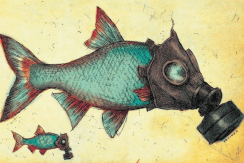
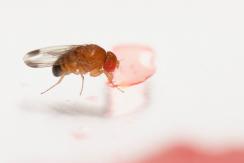
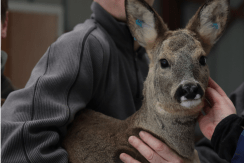
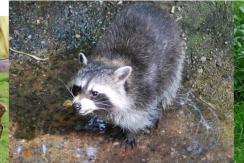
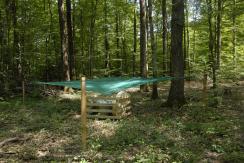
You also, comment on this article